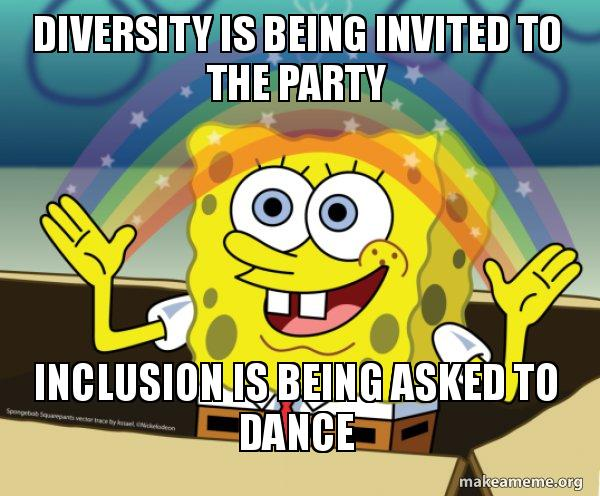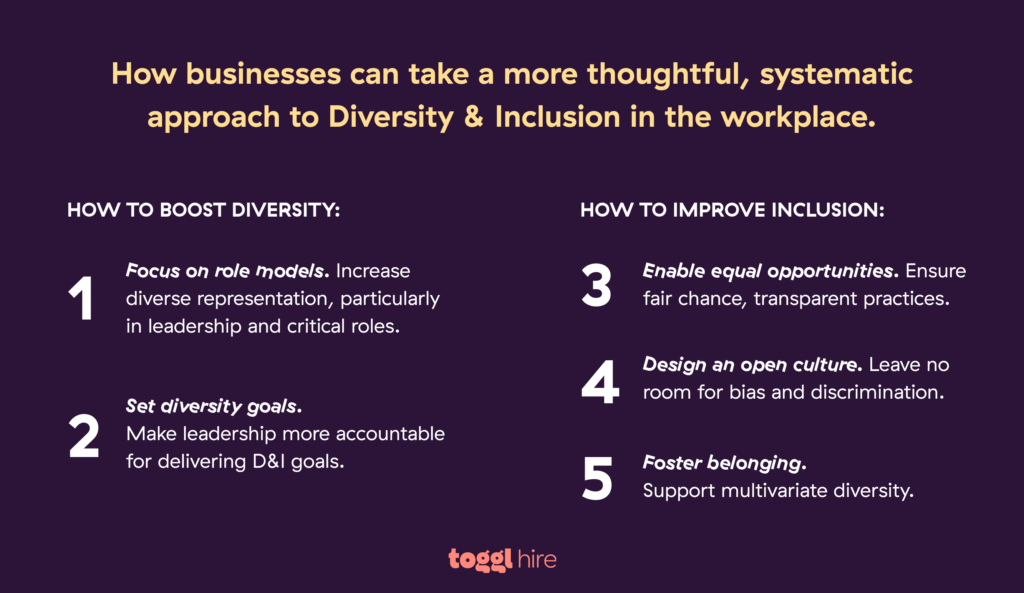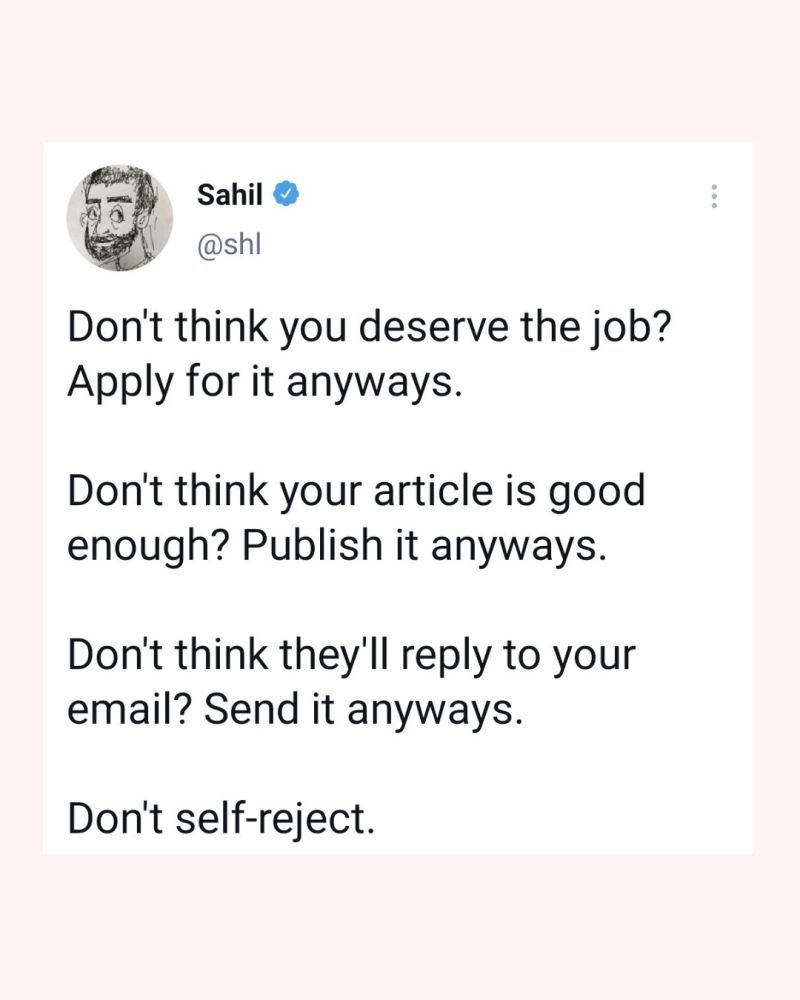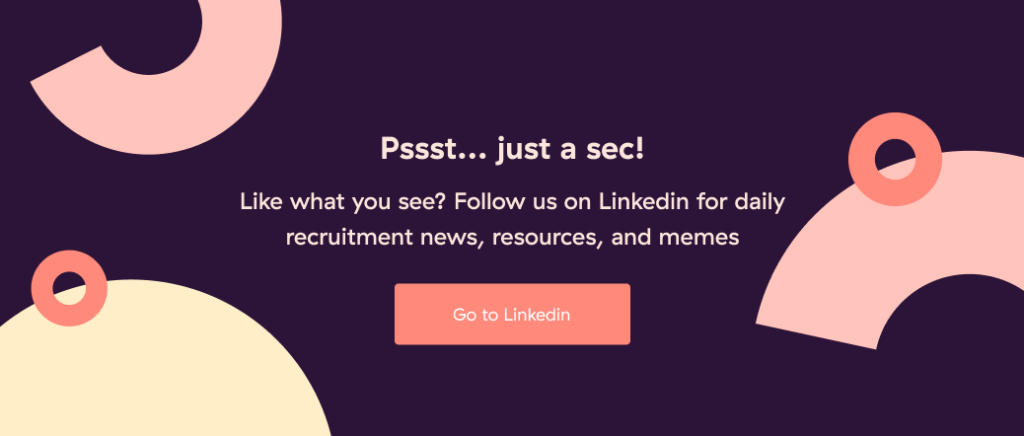We intuitively understand that workplace diversity matters. And the latest research shows that it makes complete sense in the business context, too.
A diverse workforce not only helps to level the playing field for minority groups, but brings together people with different ideas, viewpoints, and working styles to make teams up to 35% more effective.
And yet, despite all the evidence, many companies still struggle with diversity and inclusion policies – especially when it concerns diversity recruiting.
While governments leverage progressive laws to make Diversity & Inclusion (D&I) a standard requirement during the recruitment process, organizations scramble for more practical advice on how to interview and hire diverse candidates.
So in this article, we’ll look at:
- defining diversity & inclusion in the workplace
- the importance of investing in workforce diversity
- the benefits of a more diverse recruitment process
- 8 ways to boost diversity and inclusion in recruitment
- diversity metrics in recruitment
Ready to learn something new? Let’s go!
What is Diversity & Inclusion?
In business, Diversity & Inclusion is all about ensuring you create a level playing field for all employees. All job seekers need to be given a fair chance.
The same opportunities and respect are given to candidates and employees, regardless of their:
- Race
- Age
- Gender
- Sexual orientation
- Religion
- Disabilities
Diversity is about recognizing difference. It’s acknowledging the benefit of having a range of perspectives in decision-making and the workforce being representative of the organization’s customers. Inclusion is where people’s differences are valued and used to enable everyone to thrive at work. An inclusive working environment is one in which everyone feels that they belong without having to conform.
The official definitions by CIPD
Failure to fully enable diversity and inclusion is illegal in many western countries.
It also means you miss out on the best talent by only focusing on specific criteria, greatly diminishing your access to qualified candidates.

So, what is diversity recruitment?
Diversity recruitment expands the candidate pool to encompass people from all walks of life, regardless of social or economic backgrounds.
If your recruitment process isn’t inclusive, there’s no chance that your workforce will be, which will severely limit your talent pool.
Inclusive recruitment forces recruiters to look at hiring differently by taking away many of the opportunities for unconscious bias and downright discrimination to exist within your workplace culture.
And no matter how hard you try, naturally, we all have biases that we may not be aware of. Our own upbringing, culture, or worldviews may mean we favor a particular type of person without even knowing it.

Some of the diverse workplace stats you need to know:
- 61% of employers believe partnering with diversity organizations can help them reach broad talent pools.
- Companies in the top quartile of racial/ethnic diversity were 35 percent more likely to have financial returns above their national industry median.
- 48 percent of Generation Z are racial or ethnic minorities.
- Minority groups will reach majority status by 2044.
- Diverse teams are 87% better at making decisions.
- 74% of millennial employees believe their organization is more innovative when it has a culture of inclusion, and 47% actively look for diversity and inclusion when sizing up potential employers.
As the stats show, most organizations need to eliminate bias and change their corporate culture to survive.
What Are The Benefits of a More Diverse Recruitment Process?
There is a vast array of benefits both to the organization and the recruiter when making the recruitment process more diverse.
Here are our top benefits of diversity hiring for each party.
For the organization:
- The Best Talent. By making your recruitment process more diverse, your business has the best chance to recruit the best talent on the market. Eliminating barriers to entry will allow you to pick from a wide range of diverse talent, no matter which demographic they fall into.
- Different Viewpoints. Individuals with different cultural upbringings, religious views, and skillsets make for well-rounded teams and enable faster and better-informed decisions to be made. This also equates to a diverse workplace and, later, diverse management teams.
- Better Culture. A more diverse workforce leads to a broader and more adventurous business culture. Ultimately, working alongside a mix of people from different backgrounds makes for a fascinating workplace and increased employee engagement.
- Innovation leaders. Employees from diverse backgrounds lead to diverse ideas. It may sound simple, but so many companies ignore this insight.
For the recruiter:
- More Candidates. Making your recruitment process more inclusive means you attract more candidates from different sources. Diversity initiatives can help recruiters fill hard-to-hire-for roles and boost the talent pipeline for future vacancies.
- Better Candidate Quality. Recruitment is a numbers game. Finding more candidates invariably leads to finding more high-quality individuals who are primed and ready to take on your vacancy.
- Faster Time to Hire. More candidates + higher quality = vacancies being filled faster. Creating a more inclusive and diverse pipeline of candidates means you have everything you need to progress through the recruitment process at pace.
8 Ways to Boost Diversity & Inclusion Within Your Recruitment Process

Now that you know precisely why you should promote a diverse and inclusive recruitment process, it’s time to put your new recruiting process into action.
Here are 8 ways you can make your recruitment process more diverse and inclusive to start attracting the very best candidates.
#1 – Inclusive & Straightforward Job Descriptions
First, focus on making your job descriptions as inclusive and easy to understand as possible.
At a basic level, this starts with your language. Ensure you remove any unnecessarily long words, jargon, and internal acronyms. Otherwise, you’ll completely alienate external candidates.
An important factor here is to write descriptions as plainly as possible.
What does a good vs. bad job description look like?
At a deeper level, take the time to consider the prior experiences or skills a candidate really needs to undertake the role.
For example, does your role actually require a university degree to be a developer? If not, by including this requirement, you’re potentially missing out on a great self-taught candidate who has the skills to do a fantastic job but, for any number of reasons, doesn’t have a degree.

Remember, the more inclusive your job ads are, the more candidates will understand them and potentially think about applying!
Be sure to replace exclusionary words with inclusionary synonyms.
Some examples of exclusionary words
- Criminal background check – replace with “background check”.
- Digital native – replace with “passionate about technology”.
- Maternity leave – replace with “parental leave” as this can dissuade male and female candidates.
- he/she – replace with “they/you”.
- Handicapped – replace with “disability”.
- English native speaker – replace with “fluent in English”.
#2 – Widen Your Job Board Net
When was the last time you ventured away from Indeed, Monster, or Linkedin when posting your job advertisements?
While those job boards are the most popular in the world, they aren’t very targeted and often lead to recruiters taking a scattergun approach.
Try diversifying your reach and include some niche job boards in your marketing campaigns. Especially if you’re looking for a specific skill or role, try heading for a job board specializing in a particular area, such as web development or market research.
Some ideas to help find the right job board:
- Can you target specialized fields?
- Can you focus on minority candidates?
- Are the job ads country-specific?
- Is there a diverse talent pool?
Alternatively, try thinking outside of the box and consider job boards for remote or home-working candidates – it’s the new normal, after all.
If you’re open to working in that way, these boards may help you reach candidates who would be nervous about applying for a role on a generic site having instantly disqualified those roles vs. their needs.
Examples of diverse job boards:
- Diversity.com – Black and underrepresented talent at all skill levels
- Black Career Network – Highly-engaged candidates from the Black community
- Après – Talented moms looking to re-enter the workforce, which will allow you to target female candidates.
- Pink Jobs – A wide range of highly-skilled candidates from the LGBT+ community.
- WorkForce50 – Awesome talent 50+ years of age, which is one of many underrepresented groups.
- AbilityLinks – Candidates with disabilities
- RecruitMilitary – Veteran candidates from all kinds of diverse backgrounds who are settling back into civilian life.
- We Work Remotely – Candidates from all types of backgrounds who are interested in remote work.

#3 – Explore Blind Hiring and Anonymous Applications
When you first receive a candidate’s application, ask yourself what information you really need and what information could accidentally lead to unconscious biases.
Do you need to see someone’s name when reviewing their skills? Do you need to know someone’s gender when looking at their previous experience?
De-personalizing what the recruitment team sees as part of the initial application removes any opportunity for discrimination against characteristics such as age, race, and gender.
That leaves you to focus all of your energy on the things that matter, such as skills, competencies, and previous experience.
This is one of the key steps to creating a diversity recruitment strategy for inclusionary recruitment.
Instead of manually sifting through applications and using the old-outdated way of assessing candidates, you can try using blind hiring tools like Toggl Hire.
You can adopt a workflow that assesses the skills and knowledge of potential candidates without ever having to know their education or work history details.
#4 – Level The Playing Field With Skills Tests
One of the best ways to remove any bias from the recruitment process is to replace traditional resume applications with skills tests.
Skills tests are an excellent way to understand whether candidates have the skills, knowledge, and competence needed to fulfill the role. Naturally, at Toggl Hire, we’re a little biased when it comes to skills testing. We think they’re a great way to shake up your recruitment process and attract candidates from a range of different backgrounds.
Want to hear more? Check out this 1-minute video explaining how we do skills testing at Toggl Hire.
#5 – Standardize your interview process
As you move onto the interview stage, it’s time to adopt a data-driven workflow to eliminate unconscious biases. Set up several metrics to track so that you can better understand the quality of the hire.
Trackable metrics
- Cost-per-hire
- Time-to-hire
- Source of hire
- Candidate experience scores
- Job offer acceptance rates
Incorporating Structured Interviews
One way to tip the balance back the other way is to create a consistent interview experience by assessing candidates on exactly the same questions.
While this may be a little monotonous for recruiters and HR professionals, it ensures everyone has a fair and balanced shot at showcasing their aptitude for the role.
Structured interviews also greatly increase the ease of the selection process while bolstering hiring decisions.
It also serves best to have several interviewers asking and assessing the responses. This gives a balanced view of the candidate’s performance and allows you to build consensus as a team around who’s best for the role.
#6 – Develop an employer brand that celebrates your diversity
The hiring process isn’t just about finding the right job seekers who apply; it’s also about enticing the best of the best to consider your company.
Whenever your company celebrates a day centered around diversity or promotes a previously disadvantaged individual, talk about these milestones publicly.
In fact, celebrate all of the achievements of employees from ethnic or marginalized backgrounds. This shows that the company genuinely cares about diversity and inclusivity.

Balanced communication conveys that the business is an equal opportunity, is a diverse organization, and understands the need for positive company culture.
A little trick is to focus some of the employer branding on the hiring managers to show that there is no stereotype threat to candidates.
And don’t forget to show off your diverse teams!
#7 – Have a Fair Complaints/Appeal Process
Work to introduce a fair and robust appeal process for candidates to complain if they feel they have been unfairly treated.
While this may lead to some uncomfortable conversations, a diversity and inclusion complaints process creates transparency and helps you shine a light on areas that may need improving.
It also shows candidates you’re serious about diversity and inclusion. For specific candidates who have had a poor experience in the past, this will give them the confidence to apply for your roles, safe in the knowledge that your recruitment team has D&I at the center of everything they do.
#8 – Diversify your hiring team
Remember we spoke about unconscious biases? By initiating a diversity recruiting strategy across all departments – expanding your hiring team with members from a wider background – you can start to eliminate these biases in the hiring process.
We’re not saying that you need to be replaced, but that you need more co-workers in your interviewer panel.
The same can also be said for selecting more diverse leaders in the upper levels of your organization.
It’s always a positive outlook when there are diverse management teams instead of the same copy-and-paste look of the average CEO and c-suit.
Diversity metrics in recruitment: how to track your progress
You need to stick to your diversity recruitment strategy… but how? Set up metrics and keep track of all of the recruitment data when hiring diverse talent.
Set up a few key performance indicators to achieve with your candidate sourcing.
Examples of diversity metrics to measure success:
- How many candidate resumes have your received?
- Is there a diverse range of candidates?
- Are there more women applying after tweaking the inclusive language in job postings?
- How many candidates from each country do you employ?
- How many blind interviews were conducted?
- Does the organization now have a diverse team of employees?
Final thoughts on diversity & inclusion in recruitment
Diversity and inclusion have been a hot topic for businesses for a while, but it’s equally as important for a recruitment team as it is for HR professionals.
There are so many benefits to making your recruitment process more inclusive, allowing you to attract high-quality candidates from every corner of society.
There are some pretty easy steps you can take straight away to make your recruitment process more inclusive.
This includes:
- Re-writing your job descriptions to rid them of jargon, acronyms, or technicalities and making your interview questions consistent for all candidates.
- If you really want to take diversity and inclusion one step further, why not introduce skills tests into the early stages of your recruitment process? Not only does it create a more engaging and practical experience for candidates, but it also removes any form of bias and focuses directly on a candidate’s ability to do the job you’re hiring for!
Now that you’ve read through our entire article about diversity hiring, it’s time to put your diversity recruiting strategy in place.
Remember, workplace diversity needs consistent effort. Start today with skills assessments!

Juste loves investigating through writing. A copywriter by trade, she spent the last ten years in startups, telling stories and building marketing teams. She works at Toggl Hire and writes about how businesses can recruit really great people.


